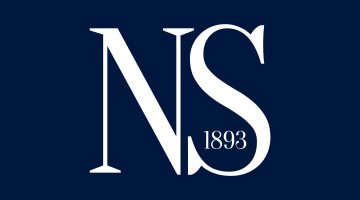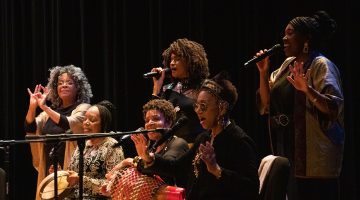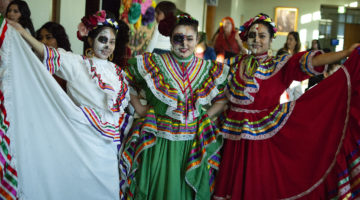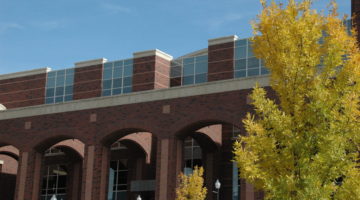
A meeting was held to discuss the University of Nevada, Reno, becoming a Hispanic Serving Institution, also known as an HSI, on Tuesday, Oct. 15 in the Davidson Math and Science Center.
“The Hispanic-Serving Institutions Division provides grant funding to institutions of higher education to assist with strengthening institutional programs, facilities, and services to expand the educational opportunities for Hispanic Americans and other underrepresented populations,” according to the U.S. Department of Education website.
In order to become an HSI, an institution must have at least 25 percent undergraduate Latinx/Hispanic enrollment. As of now, the university is classified as an emerging HSI with 22 percent. The goal of the university is to have 25 percent by 2021.
If the university reached 25 percent Hispanic student enrollment, the institution would be eligible for funding and resources through Title V of the Higher Education Act, a government funded grant program for colleges and universities to better the higher education of students of color.
In 2016, a task force was put together by the university to organize a plan to bring Latinx students to attend the university. Veronica Zepeda, director of graduate student services, is the chair for the task force. Zepeda said the task force wants to bring students here, help them succeed, graduate and then find good jobs.
In 2017, Truckee Meadows Community College and University of Nevada, Las Vegas both became HSI’s. Currently, the Nevada System of Higher Education has four institutions classified as HSI’s as of the fall 2017 semester. As of fall 2018, TMCC had 30 percent Latinx enrollment, and UNLV sits at 31 percent Latinx student enrollment as of fall 2019.
The HSI panel consisted of faculty members, graduate and undergraduate students from the university and TMCC. They took questions from a moderator and the audience about the university’s path to becoming an HSI.
The panel emphasized resources and grants received would not only apply to Latinx students, but all minority groups on campus.
Other topics discussed were building a strong relationship with the community, education of faculty, administration, students and alumni on matters relating to minorities on campus and connecting with the families of Latinx students.
According to panelist and Director of the Associated Student of the University of Nevada Sandra Rodriguez, having events geared towards underrepresented groups so families can learn about programs in place is meaningful and can have a positive impact on the community.
With current events happening on campus related to white supremacy, hate and bias, Rodriguez said minority students are taking a greater part in campus life and have felt tensions.
The panel emphasized educating faculty, administration and students on issues concerning minority students can help improve how welcomed these students feel on campus. Furthermore, getting alumni involved and showing them how they can contribute to the effort by donating to benefit diversity programs can mean the difference between a minority student attending a research-based university or not, according to Rodriguez and Yevonne Allen, Program Manager of equity, inclusion and sustainability at TMCC.
Some Latinx students come from multigenerational families who do not speak English. So sending newsletters and information in both English and Spanish is essential to help them feel included in matters relating to the students.
The panel emphasized there are already efforts on campus to include Spanish-speaking staff, students and families, and these efforts are to genuinely help them, not just to gain the funding by becoming an HSI.
- The university has Noticiero Móvil, a student-run multimedia news outlet run by The Reynolds School of Journalism. NM provides coverage in both English and Spanish.
- The Latino Research Center was reestablished in January 2019.
- Latinx student graduations every spring semester.
- Events centered around Latinx cultures: Dia de Los Muertos and Noche Latina.
The College of Science has the highest Latinx freshman to sophomore retention rates, according to Zepeda.
The Campus Climate Survey came out last month, and showed approximately 30 percent of minority students felt “less comfortable” on campus than non-minority students.
Madeleine Chinery can be reached at andrewmendez@sagebrush.unr.edu or on Twitter @NevadaSagebrush.











